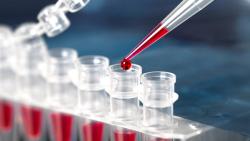
OR WAIT null SECS
- About Us
- Advertise
- Editorial Information
- Contact Us
- Do Not Sell My Personal Information
- Privacy Policy
- Terms and Conditions
© 2024 MJH Life Sciences™ and BioPharm International. All rights reserved.
Glycan Analysis: A Primer
NIBRT's Pauline Rudd on what to expect when performing glycan analysis.
In this fourth part of a series of primers with training experts from the National Institute for Bioprocessing Research and Training (NIBRT), Pauline Rudd, PhD, professor of glycobiology at University College Dublin (UCD), discusses glycan analysis. NIBRT provides training, educational, and research solutions for the international bioprocessing industry in state-of-the-art facilities. Located in South Dublin, it is based on an innovative collaboration between UCD, Trinity College Dublin, Dublin City University, and the Institute of Technology Sligo.
KEY DEVELOPMENT AND MANUFACTURING CONSIDERATIONS
BioPharm: Can you provide a brief overview of what exactly glycan analysis targets and its importance in bioprocessing?
Rudd: Most glycoproteins, and almost all of the new biological drugs, are proteins with sugars attached to them. These sugars are important for the safety and efficacy of drugs, so it is necessary to be able to control the processing of the sugar structures to make sure that the drug is as effective as possible. There are many aspects of developing and processing a drug that require having analytical technologies for glycosylation. For example, in the beginning of a drug-development process, one needs to understand the role of the sugars on the protein being used. On erythropoietin, for example, the sugars must be multiantennary and fully capped with sialic acid; otherwise, the erythropoietin will only be in the patient for a few minutes, whereas if it is completely sialylated, it will be present in the patient for 3 hours or more, during which time it will be able to be effective in stimulating the production of red blood cells. It is key to monitor the production process to make sure that the erythropoietin has the sugar structures that provide the full benefits of glycosylation. It is always important for biologics developers to understand exactly how the sugars in their product are going to modulate the functions of the drug in the patient. Once this knowledge is obained, drug developers can define an optimal glycan profile.
The next stage of bioprocessing, clonal selection, requires identifying a high-producing clone that has the ability to fully glycosylate the molecules with the optimal sugars. When selecting clones, glycan analysis enables the producer to determine the complement of glycoenzymes that are operating within a particular clone.
The next aspect of glycosylation that must be checked is the potential introduction of an antigenic epitope. If one is making a product in a nonhuman cell line, such as mouse cells, it is necessary to check the levels of alpha-galactose and N-glycolyl-neuraminic acid residues, which may be antigenic to humans. After the candidate clones are selected, the process of producing the protein from the cells must be monitored. Taking samples during the process allows one to assess whether the media composition is optimal for producing the desired glycosylation profile. In process development, optimizing the media is necessary to produce high levels of correctly folded proteins as well as the desired post-translational modifications, including glycosylation.
BioPharm: What role do glycans play in the manufacturing stage?
Rudd: When making a biologic product, one needs to track the glycans, which will help to determine the best time to harvest the product. When one reaches the downstream processing stage, high-performance liquid chromatography (HPLC) is often used to select subfractions of the product. Being able to analyze the glycans to ensure that their subfractions are correctly glycosylated is crucial. This information will be used during conversations with regulatory authorities so that the agency can agree on specifications for the drug product. Glycan analysis will be part of that specification because it will be part of the regulators assessment of the drug's safety and efficacy. It will also be necessary to demonstrate to regulators that the process is robust and can be reproduced for batch and lot release.
Then comes the consideration of long-term storage. Although in general, glycans are quite stable, it is important to ensure that glycans do not change by testing after degradation and stability studies. Functional assays are also important to determine whether a product, IgG, for example, is able to bind to the desired receptor and not to those receptors that can cause side effects in the patient. Some of these questions require an understanding of how glycosylation modulates activity of the drug.
Overall, there are many reasons to perform glycan analysis and many ways to approach it. It is therefore important to understand the question being asked before deciding which method to use.
COMMON CHALLENGES IN CONTROL AND TECHNIQUE
BioPharm: What common challenges is the industry facing today when performing glycan analysis?
Rudd: Glycan processing is difficult to control because it involves a complex process that involves the expression of genes (the genes carry the code for the glycosylating enzymes) as well as the delivery of monosaccharides on nucleotide donors to grow the glycans. There are many things to control, and nearly 600 proteins are required to build the glycans as well as to transport the glycoproteins into the correct organelle for complete glycan processing.
If one is over-expressing a protein, it is possible to exhaust some of the glycosylation machinery. It is not uncommon to find incomplete structures attached to a protein, which indicate that the processes to build the sugars has not operated on all copies of the glycoprotein going through the secretory pathway. Understanding how to get the cells to express at a level where the rest of the machinery can cope is just one challenge.
Another difficulty is determining what to do when the glycosylation is going wrong. One needs to understand in depth how media components and metal ions, for example, can alter glycan analysis. The natural cell is exquisitely tuned and responds very finely to its environment. It is difficult to replicate this robustness in a bioprocesssor.
BioPharm: You mentioned that industry uses various techniques for glycan analysis. What are the most commonly used instruments and techniques?
Rudd: Glycan analysis depends on a series of separations technologies that exploit different physical properties of the oligosaccharides. There are several ways to approach it. If you are focused on analyzing released glycans, you need to have an optimized method for releasing them. There are many glycoconjugates, but from the point of view of the pharmaceutical companies the most commons ones are N-linked glycans. There is an enzyme called PNGase F that can be used to remove them from proteins of most species. After that stage, various separations technologies can be used to separate glycans according to mass/charge, charge, size, and lipophilicity by techniques such as hydrophilic interaction chromatography (HILIC), ion-exchange chromatography, reverse-phase chromatography, or capillary electrophoresis.
BioPharm: What gaps still exist in glycan-related technology and instrumentation?
Rudd: NIBRT uses a lot of special instrumentation, but we are working to get the analytical technologies miniaturized and as straightforward as we can. We have a robot that can accommodate 96 well plates, for example, so that one can put the samples on the instrument and come back later to put the released sugars on a HPLC machine or use mass spectrometry for analysis. We also have the capability to run linear samples, meaning that we can take samples one at a time from a bioprocesser every few hours. Going forward, industry will be looking to miniaturization, automation, and, particularly, automated data analysis.
REGULATORY ISSUES
BioPharm: What regulatory expectations exist for glycan analysis when developing a biologic compared with a legacy product?
Rudd: Actually, there is a debate at the moment. Regulators need companies to report critical features of the glycosylation, but in some cases, it is not clear what "critical" features include. There is a need for more basic research to clarify these questions. For some molecules, such as IgG, it is known that the Fc glycosylation modulates effector function, so the regulators can ask for a full glycan analysis of IgG. One can report the sialylated structures, the levels of galactosylated, fucosylated, and bisected structures, because it is known that each of these features can modulate a function. To get the information, teams need to perform a complete analysis of IgG and present the data in a way that answers the questions about critical features that affect the safety and efficacy of their product.
If one is working with erythropoietin, it is necessary to report the percentages of different antennary structures as well as the extent of sialylation, because this critically affects the pharmacokinetcs of the drug. One needs to report levels of N-glycol-neuraminic acid, alpha(1,3) linked galactose as well as levels of xylose and alpha(1-3)-linked fucose, because these are potential antigenic epitopes. In general, regulatory expectations are getting higher because the technology is getting better. In the past, none of us really understood the implications of glycosylation in therapeutics and regulatory requirements were to define the glycosylation as well as one could. Our understanding has moved a long way since then, and regulations are far more demanding.



